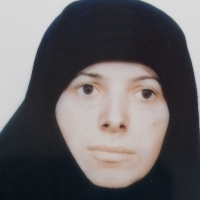Evaluating the Level of Sustainability of Arak Urban Areas from the Perspective of Citizens
Today, the increasing level of urban population and migration has caused new challenges in the structure and performance of cities in environmental, socio-cultural, and economic issues. Urban sustainability is a concept that emerged as a new paradigm in the world following the sustainable development plan, and it is an approach that leads to social justice. It is necessary to provide a suitable basis for evaluating and measuring environmental, economic, and socio-cultural sustainability in urban planning and development. Arak metropolis is one of the most polluted cities in the country. The purpose of the present study is to measure the sustainability of Arak city zones from the citizens' point of view to show the quality of different city zones.
The city of Arak, the capital of Markazi Province, has 5 municipal zones and a population of 520,994 in 2016. Regarding geomorphology and geology, Arak is located in a valley surrounded by mountains on three sides and the Miqan desert. With the establishment of several industrial plants, such as machine building and metal industries, in the 1940s, the city became polluted environmentally. The required data and information were collected by secondary and field study using a questionnaire; in order to achieve the objectives of the research, 4 main indicators and 13 sub-indices related to sustainability in Arak were defined from reliable sources in this field and adjusted in the form of a 5-option questionnaire in the form of a Likert scale from very high to very low. The statistical population of the research consists of all the citizens of Arak city who are over 20 years old and have a history of living in Arak city for over 5 years (due to the understanding of the dimensions of the research), which is 384 as sample size. Stratified sampling based on urban neighborhoods were exerted to distribute the questionnaires. In order to measure the validity of the research questionnaire, the opinions of 10 experts commented on the primary version. Also, in order to measure the reliability of the questionnaire, Cronbach's alpha test was exerted, and the reliability coefficient was obtained above 0.70 percent, which confirmed the reliability. Finally, the collected information was analyzed using GIS and SPSS26. To measure indicators for variable, a one-sample t-test and variance test (ANOVA) was used, and Friedman's test was applied to rank indicators and the urban zones. Finally, GIS was applied to display the analysis results in maps regarding the different socio-economic and environmental dimensions.
The research results showed that the average economic sustainability is more than 3, and the upper and lower limits are positive. So, the status of economic sustainability in the 5 zones of Arak is evaluated from medium to high. Also, the average of the variables of environmental and physical-infrastructural sustainability and socio-cultural sustainability is less than 3, and their lower and upper limits are also negative; Therefore, according to the significance level is less than 0.05, it can be concluded that the average obtained is lower than the value of the test (3) and the status of variables of ecological-environmental sustainability, physical-infrastructural sustainability and socio-cultural sustainability in the 5 zones of Arak are evaluated as less than average and inappropriate. The finding from the Friedman test revealed that the highest average rating (3.14) is assigned to economic and the lowest average rating (2.05) to physical-infrastructural sustainability.
The theoretical and research background review showed that sustainability is valued concerning economic, social and environmental indicators. Paying attention to sustainability issues as one of the most important factors and drivers for promoting urban development has been the focus of urban planning researchers and city planners in recent years. Environment-friendly policies could strengthen sustainability. The present research showed that the sustainability of the different urban zones of Ark is evident regarding the different dimensions. So, it can be concluded that the following recommendations could improve the situation as strengthening local and indigenous industries compatible with the environment, increasing green space, concerning the limits of factories can reduce pollutants, and closing polluting industries or at least modifying and improving them.
- حق عضویت دریافتی صرف حمایت از نشریات عضو و نگهداری، تکمیل و توسعه مگیران میشود.
- پرداخت حق اشتراک و دانلود مقالات اجازه بازنشر آن در سایر رسانههای چاپی و دیجیتال را به کاربر نمیدهد.



